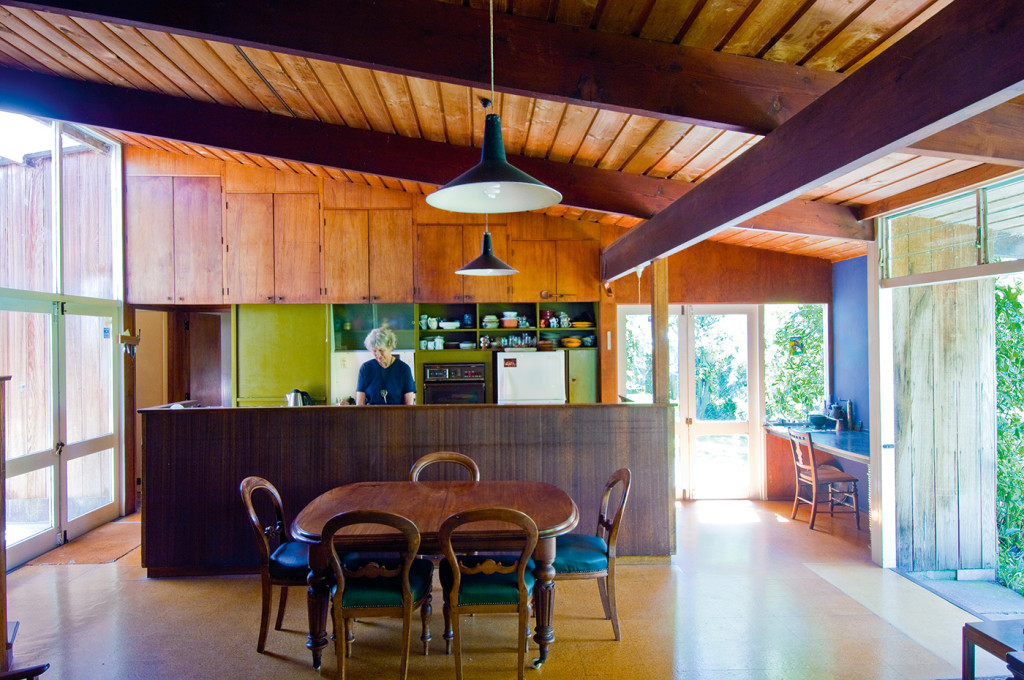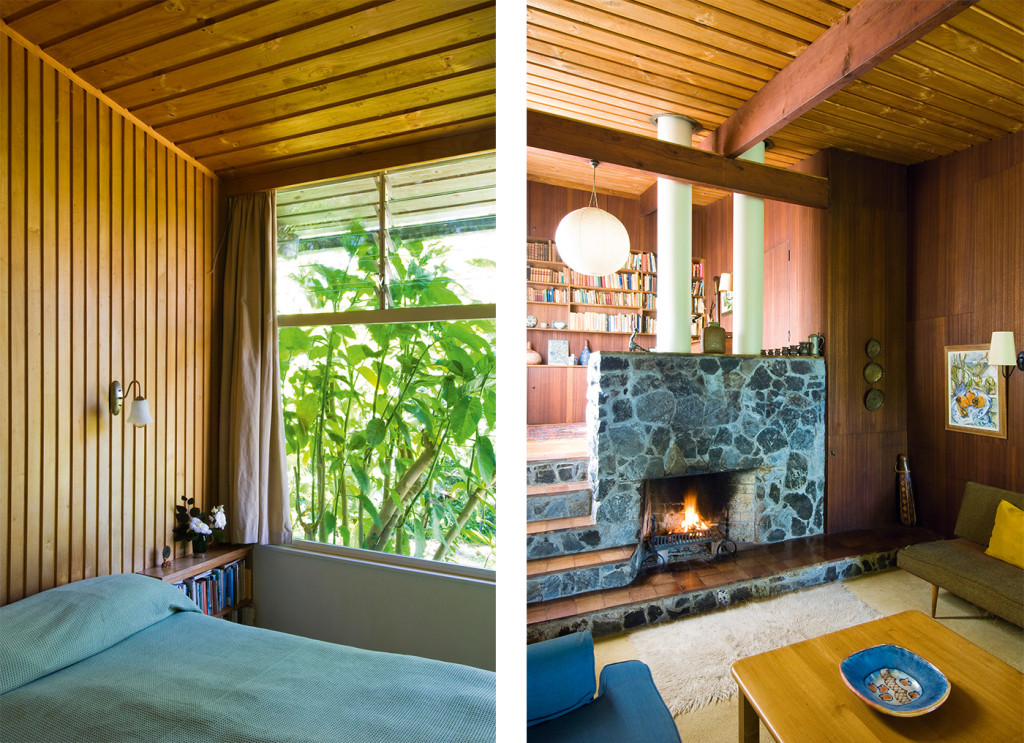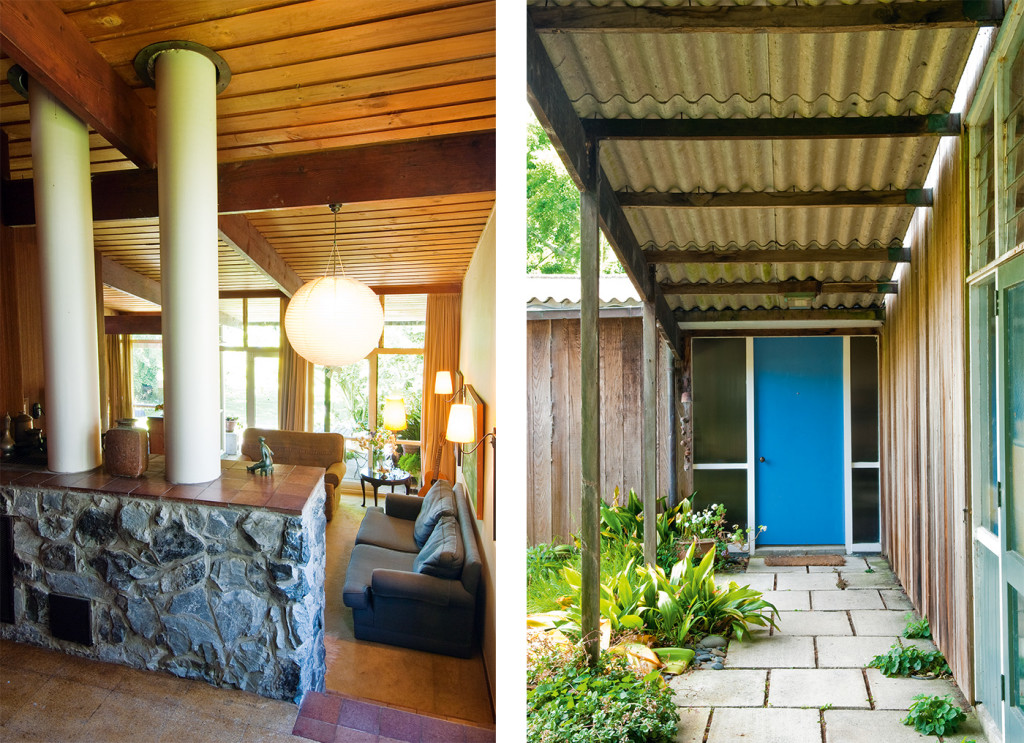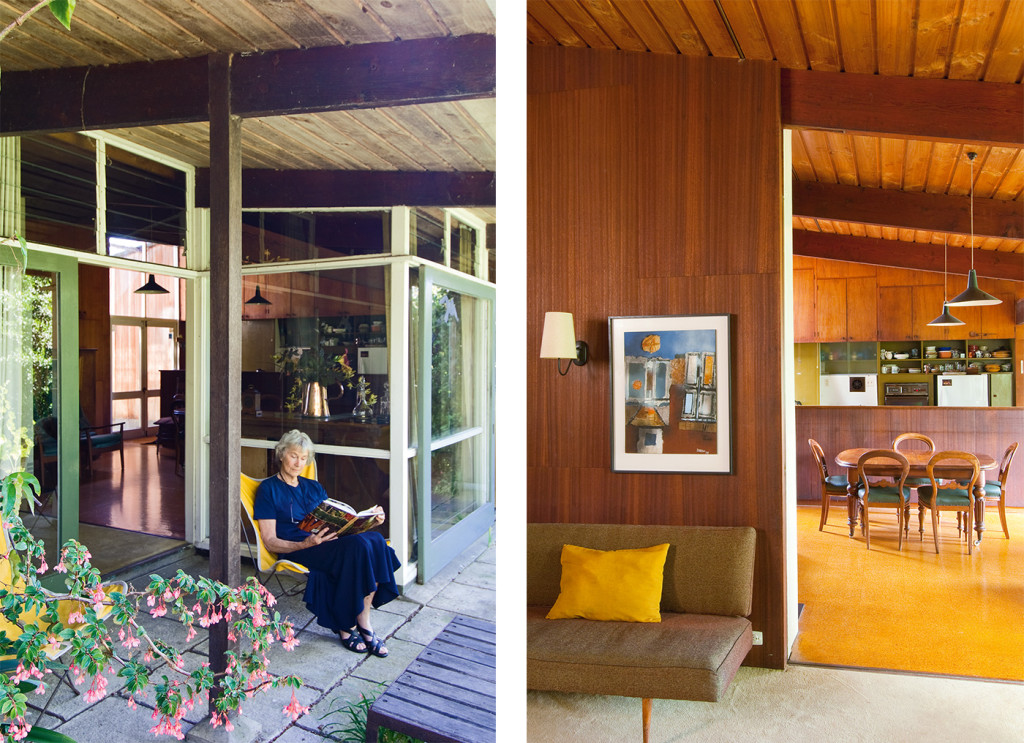
In 1954, Heather Lomas worked with Peter Middleton on the design of her family home in Hamilton, as elegant today as it was when built.
Back in the 1950s, Hamilton was hip and hopping. It had enough ballast for city status by the end of the war in 1945, but the population soon trebled, propelling it to become New Zealand’s fourth largest centre by 1966. Burgeoning construction companies FT Hawkins and Brian Perry, as well as manufacturers Trigon Plastics and Ullrich Aluminium, were proud to call Hamilton home.

Intelligence and ingenuity abounded: medical professionals came to work at the hospital, and agricultural researchers found jobs at Ruakura. A smattering of European refugees such as painter Margot Phillips gave an accent to the cultural scene, offsetting the local vernacular: printmaker and dramatist Campbell Smith, critic and painter Geoff Fairburn and his artist wife Jean, book publishers Janet and Blackwood Paul, and writer Alexander Gaskell Pickard (AP Gaskell).
In 1948, Ernst Plischke gave Paul’s Book Arcade a daring revamp, its glitteringly lit glass windows and snazzy black-and-white tiles becoming a beacon on Victoria Street for the New Hamiltonians. Plischke would later deign to design a home for Pickard and his librarian wife, Judy, in 1960, but this was five years too late to be the city’s first architect-designed modernist house.
That distinction belongs to Peter Middleton’s elegant Lomas house, built in 1955, which graces Hamilton’s Lake Rotoroa and which was published, coyly, as ‘House in an Auckland Provincial Town’ in this magazine’s predecessor, Home & Building, in April 1960.

Resident in Auckland for only 15 years, from 1950 until 1965, Nottingham-born architect Peter Middleton (1917-1996) was both a prolific designer and a prodigious architectural writer. In total, he designed nearly 30 houses in Auckland during his sojourn there as Senior Lecturer in Architecture at Auckland University College. Middleton’s Hamilton clients, the Lomases, had admired Middleton’s remodelling of a house in Wharf Street, Warkworth, and invited him to talk to the Waikato Society of Arts, about some of his radical, modern ideas – principally, the open-plan interior.

Middleton was fond of voicing his opinions. Writing for the NZIA Journal in 1962, he hazards plenty of unsupported generalisations about New Zealanders, their attachment to the myth of the classless society, and suburban architecture in general, in an article entitled ‘A House is A House is A Home’. Tendentiously, he argues that it is often the New Zealand woman who is the true designer of her house, and that “the increased domination of women over house design has led to an increase in display and a decrease in privacy,” because “a man views his house as a refuge and a woman as an extension of her personality.” Such public acknowledgement of the role of the woman client in the creation of New Zealand’s domestic architecture was not common in the period.

The woman of the house in this instance was the well-educated and cultured Heather Lomas (née Oliphant) who had completed her Diploma of Fine Art at Canterbury College School of Art at the end of 1947. She had married the founder of the Waikato Hospital Radiotherapy Department, Alan Lomas, and together they had bought the last vacant section in Lake Crescent in 1953.
Middleton was to design five houses for different medical doctors, whom he distinguished as the Brahmins of New Zealand’s so-called classless society. Traversing the different strata of New Zealand society in his 1962 NZIA Journal article, he concluded that “the most respected personage in the community is the doctor, who is often regarded as both aristocrat and priest.”
Middleton’s writing suggests that the doctor’s wife, rather than the doctor, designed her house. A talented gardener as well as an artist, Heather Lomas’s green fingers itched to develop the half-acre section which sloped down to the edge of Lake Rotoroa. Ambitiously, she planted it with 40 trees (18 survive), so that the foliage framing the lake view would change seasonally. Middleton’s 1962 article explains this necessity for immediacy: “Houses are extrovert, [but] centrifugal… inducing one to get further and further into the centre of the place, like the snail into its shell… The extrovert character is confirmed by the demand for a view, with no foreground.”
Wartime building restrictions persisted even in 1954, so to extend the floor area of their new house to 1800 square feet, the couple had to produce a certificate to state that a fourth child was on the way. The resulting plan is L-shaped, with family sleeping areas at the end of one wing, and living areas and an artist’s studio at the other.

Middleton believed in zoning his houses: “The living room is the hub from which the family’s activities radiate. The adults and their guests have the one side, the children have the other. Overnight guests are not disturbed by early rising children,” he wrote in Home & Building in 1960. A sliding wall lovingly finished in mahogany plywood by master builder Norman Crawford was intended to separate the living room and kitchen from the demarcated grown-up areas of parlour and library but, as Middleton wrote, “The sliding wall was expected to be rarely open: in practice it is rarely closed. Its mere presence seems sufficient to restrain the children from disturbing the parlour”.
While the external walls were clad in cedar, with a fibrolite roof over the pine planks of the ceiling, the internal joinery is oiled rimu, and the floors are finished by cork tiles laid on concrete. All this wood fills the house with golden light, creating a warm, homely environment with a roughly hewn stone hearth at its centre. “The creation of symbolic images is the core of [the architect’s] function,” Middleton wrote in 1962. Rather than designing a house to be a house, then, in Hamilton, he achieved his goal of conjuring the notion of being at home.
Words by: Linda Tyler. Photographs by: Paul McCredie.
Q&A with Linda Tyler about Peter Middleton
Born in England, Peter Middleton (1917-1996) spent 15 years in Auckland, designing homes (including this one in Hamilton) and teaching architecture. Here, writer Linda Tyler tells us more about his work.
HOME What made this house radical for its time?
Linda Tyler The kitchen being open to the living room was still innovative in 1955. And in contrast to the simple, open-plan dwellings of the 1950s by other architects, Middleton’s houses had more complex, fragmented form and space. They retain elements of formality. The Lomas house has steps down from the entry hall into the living area, for example, and uses the fireplaces to divide the library from the parlour.
The Lomases were a progressive couple who liked to entertain. Wartime building regulations restricted the floor area, however even though it is not a large house, it feels spacious thanks to its open plan design.
HOME Peter Middleton had come to New Zealand from the UK. Were there any New Zealand architects working around this time who would have been as bold as him?
Linda Tyler Yes – Middleton greatly admired Vernon Brown, who taught at the School of Architecture with him. Brown’s simple, informal interiors fascinated him.





